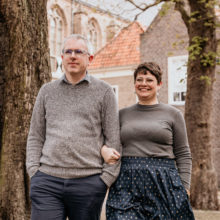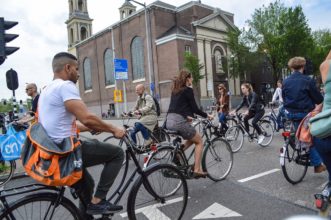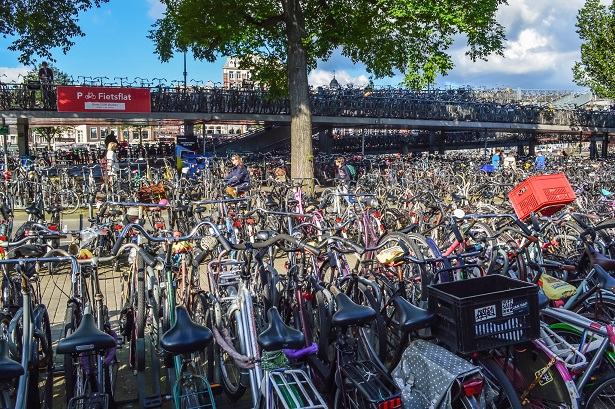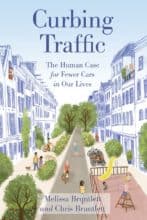“Ask a Dutch person why they cycle so much, and they’ll shrug: ‘It’s just in our culture’; oblivious to the vast infrastructure networks built to make it easy. Ask an American why they drive so much, and they’ll do the same. First we shape our streets; then our streets shape us.”

Chris & Melissa Bruntlett
This was a recent tweet posted by the Canadian authors and urban mobility advocates Chris and Melissa Bruntlett. The couple made a conscious choice two years ago to leave Vancouver and move to the Netherlands with their two children. The life-work balance is better here, they felt, in large part because people have so many more options for moving around – and therefore for living their life – than in North America. They live in Delft and have not had a driving license since they moved here.
Chris works as marketing and communications manager for the Dutch Cycling Embassy, which was started in 2011 by the ministry of transport to export Dutch expertise overseas. Melissa is an international communications specialist with Mobycon, a Dutch-American consultancy for sustainable mobility. At the end of June their new book is appearing, called Curbing Traffic: The Human Case for Fewer Cars in Our Lives. Talking to them, and reading this book, makes you stop and realize what an enormous impact our streets have on our lives: how they are designed and for whom. For cars, or for people?

Rush hour in Amsterdam
The Netherlands is the safest place in the world to walk and cycle, Chris says – but it doesn’t necessarily look that way. “Human-based transport systems feel more chaotic because they are more dependent on eye contact instead of traffic lights and rules. Those may feel safe, but ironically they are more deadly, because most drivers then go on auto-pilot and stop paying attention.”
For Melissa, it was an emotional moment to realize that as a woman on a bike here, she is no longer alone. “In Vancouver the simple act of getting on a bike in your normal clothes was remarkable. It has been nice not to stick out anymore.” Unfortunately, this past winter her bike slipped on an icy patch and she broke a leg. That meant surgery and walking with crutches for seven weeks. “We borrowed a cargo bike and Chris took me around. We did learn that there is lots of room for improvement in accessibility on trains!”
Hasn’t everyone seen the light by now about the advantages of cycling? Even Los Angeles now has a successful bike-sharing scheme, and during the corona lockdown a lot of cities have expanded their bike path networks.

Bike parking at Amsterdam Central Station
Chris: “The challenge now is that electric cars and autonomous vehicles are seen as the easy fix. But they are not going to solve everything. Ever since the Industrial Revolution, technology has been seen as the way forward. But tech cannot solve the problems cars create in equity, accessibility, livability, public space, air quality. We shouldn’t be talking about electric or autonomous or flying cars, but about fewer cars and more options. Why should we have a thousand choices for breakfast cereal and only one for mobility? We hope that our book will help cities maintain the transformation they achieved this year, and not go back to the status quo before the pandemic.”

‘Curbing Traffic’ (publ. Island Press) appears at the end of June. John Adams readers get a 20% discount (use promo code BRUNTLETT at islandpress.org) The rest of this blog will be written by the Bruntletts themselves; part 2 will be about children. You can follow them on Twitter: @modacitylife or visit their website. All pictures in this blog are by Chris & Melissa Bruntlett.
